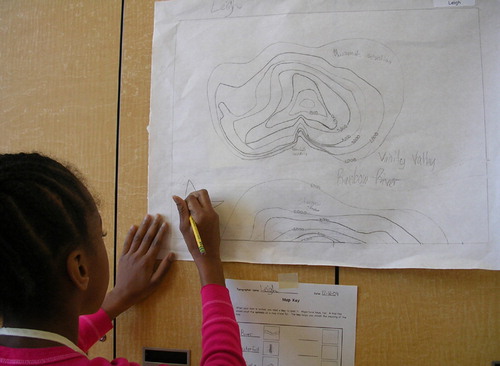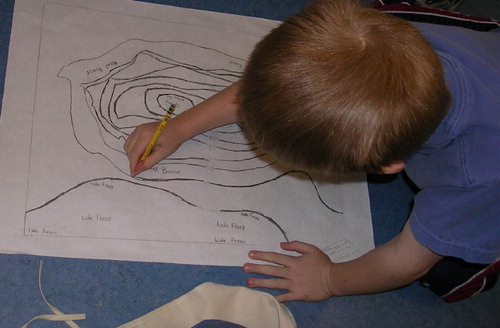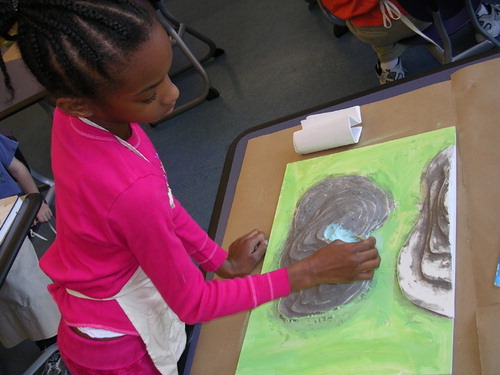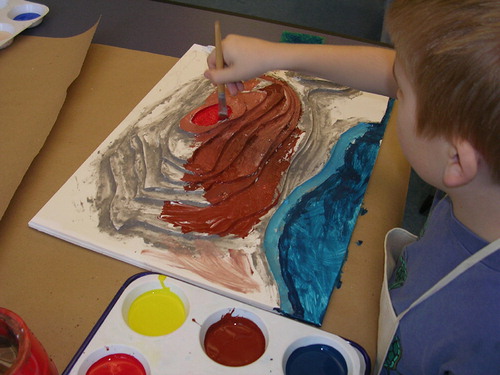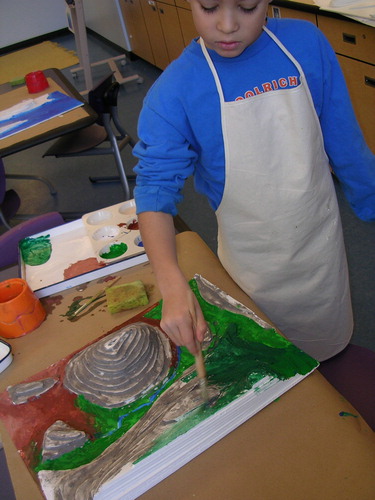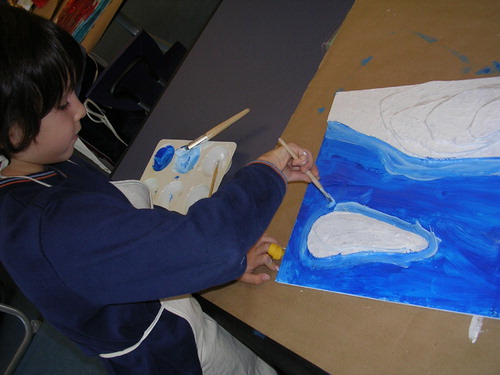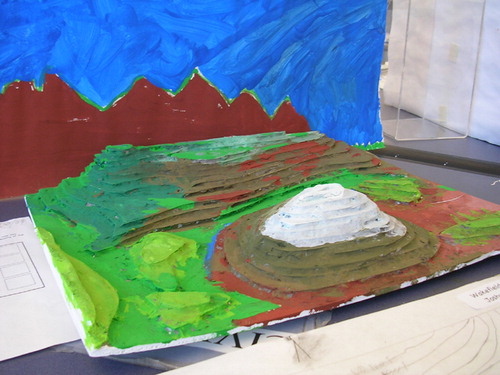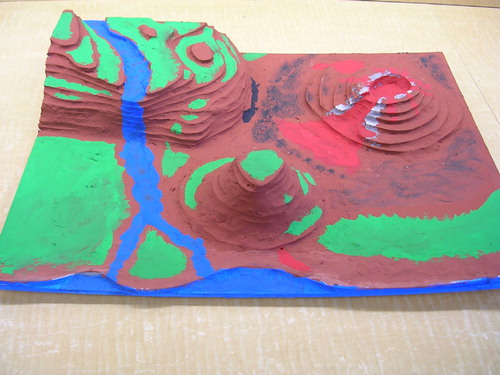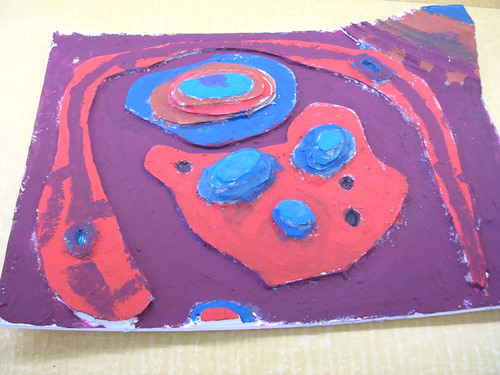Abstract
If we work every day as K–12 art + design teachers, arts coordinators, museum professionals, or university teacher educators, why should science, technology, engineering, art, and math (STEAM) matter? STEAM matters because we are more than just instructors of art and art education. While most of our students year in and year out will not become professional artists, we are nevertheless arguably the primary teachers of creativity our students will ever have throughout their education. Fundamentally, our job is to instigate and foster arts practice and design thinking as a means for individual learning, social responsibility, and creative problem solving—mediating ideas and materials toward meaningful and enduring solutions. The art studio is one of the very few spaces in school or society where widely divergent outcomes are encouraged and never-before-imagined design solutions are valued. As an acronym for educational imagination, STEAM promises the enhancement of divergent outcomes emerging from the art + design studio by immersing students in a diversity of knowledge bases across contributing domains of Science, Technology, Engineering, Arts, and Math. Moreover, one of the best things about STEAM education is that you do not have to figure out how to invent the STEAM engine for innovation alone. Diverse collaborations and resources equip STEAM classrooms for locomotion.
A Diversity of Knowledge
Renowned as an artist and designer, it is illuminating to recognize that the creativity of Leonardo da Vinci emerged from exposure to a diversity of knowledge bases and resources, not out of thin air (CitationRolling, 2013). Leonardo's individual genius was the natural extension of the collective genius of both Renaissance culture and his working relationship with other local STEAM thinkers and doers. Apprenticed at the age of 14 to the prominent artist and sculptor Andrea del Verrocchio, who worked for the court of the powerful Florentine statesman and arts patron Lorenzo de' Medici, Leonardo was the product of a swarm of activity that was known as one of the finest workshops in all of Florence, Italy, producing several other artists who grew to fame. According to a Wikipedia entry, Leonardo's young mind was “exposed to both theoretical training and a vast range of technical skills including drafting, chemistry, metallurgy, metal working, plaster casting, leather working, mechanics and carpentry as well as the artistic skills of drawing, painting, sculpting and modeling” at Verrocchio's very well-funded workshop (Citation“Leonardo da Vinci,” n.d., para. 10). In other words, Leonardo's genius was the product of a STEAM education, not just an art education!
It was his facility with a diversity of knowledge that prepared Leonardo to become a practicing architect, musician, anatomist, inventor, engineer, sculptor, mathematician, and painter. By the age of 20, Leonardo was qualified as a master in the Guild of Saint Luke, a guild of artists and doctors of medicine highlighting an era when there was no false division or hierarchy yet established between the intellectual value or practice of the arts and sciences. Leonardo flourished in an era when invention across a diversity of STEAM knowledge bases was celebrated. For example, before his death in 1519, Leonardo produced a portfolio of hundreds of brilliantly realized anatomical drawings of dissected corpses, dogs, frogs, horses, bears, monkeys, and bats, completed from around 1490 to the early 1500s. Leonardo's incisive studies of the workings of the human heart from the years 1511–1513 are said to astound cardiac surgeons even to this day.
It is easy to assume that the paradigm of “science” as we understand it today was the same held by all those who contributed to what we identify as the “Scientific Revolution” in Western Europe. This assumption is incorrect. Rather, from the 14th to approximately the mid-19th centuries, the prevailing concept of inquiry was “something called ‘natural philosophy’,” which aimed to describe and explain the entire system of the world” (CitationHenry, 2002, p. 4). This study of the workings of nature and the physical universe was exemplified in the development of areas of inquiry such as chemistry, astronomy, physics, anatomy, botany, zoology, geology, and mineralogy. In other words, STEAM-generated learning and discovery is nothing new.
STEAM Today
In this, the first of two special issues of Art Education scheduled for the calendar year of 2016, the articles that have been assembled are devoted to helping our readers reinvent the STEAM engine for art + design education. In the upcoming November 2016 issue, a new cohort of authors will present articles on the theme of STEAM locomotion, modeling classrooms and spaces for learning that are already powered by STEAM energy. Exemplified by early artist-researchers like Leonardo Da Vinci, methods of practice and technical skills applied in Renaissance visual arts, sculpture, and architecture served as “an instrument of knowledge” (Claude Lévi-Strauss, cited in CitationBerger, 1972, p. 86). Creative and scientific activities were attached together in human cultural development. Today, STEAM has reemerged in the national conversation as the premise for building contemporary studio-laboratories in educational settings along with broader curricula for arts + design learning. In my final NAEA News column as the director of the Higher Education Division a few years ago, I chose to highlight a national news item, one that was easy to miss but that continues to have direct policy implications for both the practice of arts + design education and preparing the next generation of arts educators. This brief news item was originally posted in February 2013 on the website of the Americans for the Arts Action Fund and is presented here in its entirety:
The Congressional STEAM Caucus was approved on January 28, 2013, with the Chairs and Co-Chairs being Representative Suzanne Bonamici, and Representative Aaron Schock. Representative Bonamici represents the First Congressional District of Oregon. She is on the Committee on Education and the Workforce and the Committee on Science, Space, and Technology… Representative Schock represents the Eighteenth Congressional District of Illinois. He serves on the House Ways and Means Committee and serves on three Ways and Means subcommittees: Trade, Oversight, and Social Security. Representative Schock also serves on the committee on House Administration and as the Chairman of the Franking Commission.
A bipartisan team of members of Congress launched the Congressional STEAM Caucus. The STEAM caucus “aims to change the vocabulary of education to recognize the benefits of both the arts and sciences and how these intersections will benefit our country's future generations.” Caucus members will work to increase awareness of the importance of STEAM education and explore new strategies to advocate for STEAM programs. STEAM is an acronym for Science, Technology, Engineering, Arts and Math. While the act of launching this new caucus is radical, the idea that science and art are complimentary is not so radical. Albert Einstein wrote, “After a certain high level of technical skill is achieved, science and art tend to coalesce in esthetics, plasticity, and form. The greatest scientists are always artists as well.”
Robert Lynch, Americans for the Arts Action Fund President & CEO saluted this newly formed caucus. We work to advance the cause of arts education at the federal, state, and local levels through our professional and advocacy programs. These were Robert Lynch's remarks on the STEAM Caucus,
“Thanks to the leadership of Representatives Suzanne Bonamici (D-OR) and Aaron Schock (R-IL), the message of how the arts can help launch creativity and innovation among our nation's students will have a proper place in the halls of Congress. Having worked with both of them on these issues, we were excited to assist in establishing this new congressional policy effort in education.”
While the Congressional Arts Caucus began its formation in the late 1970's through the early 1980's and is a bipartisan organization for Members of Congress who support the arts through federal initiatives, the introduction of the STEAM Caucus will cast a larger net of awareness for improving arts education. The Congressional Arts Caucus as well as the STEAM Caucus will simultaneously serve the arts community by illustrating that art can be a part of their policy solutions. (CitationThe Congressional STEAM Caucus, 2013, February 7)
So what does the news of a bipartisan Congressional STEAM Caucus mean to the National Art Education Association in our organizational commitment toward shaping human potential? What does it mean to the working elementary, middle, or high school art teacher and those of us who partner with them? First of all, it is the signal of a sea change in the area of public education. It is almost uniformly acknowledged that recent high-profile legislative solutions like No Child Left Behind and Race to the Top have not come close to adequately addressing the shortcomings of public schooling in our nation. By all measures of achievement, American learners are lagging behind much of the developed world. Not only are our schools and neighborhoods filled with too many children left behind—our present-day preoccupation with high-stakes standardized testing has too often left us racing to the sidelines.
Second, new STEAM initiatives reveal a growing recognition that a focus on STEM subjects in education alone will not meet the needs of our students or our nation. Science, technology, engineering, and math education require the arts at the center of learning as well. This has always been the engine of the highest order of creative thinking. Like Leonardo da Vinci, apparently Einstein also understood the value of a diversity of knowledge.
Third, it is noteworthy that a rethinking of the arts + design in education by other collaborating subject areas also requires a similar rethinking by our own arts education practitioners. The arts and related creative practices are uniquely adaptable (CitationRolling, 2011). Alternately—and often simultaneously—the arts have historically been practiced as (1) a system for producing well-crafted forms of aesthetic depth and beauty with a focus on thinking through observation and experimentation while achieving a mastery over materials and techniques; (2) a system for communicating cultural and personal information with a focus on thinking expressively through symbolic languages; and (3) a system for critical-activist transformation with a focus on critically (re)thinking and interrogating images, ideas, and prevailing contexts.
When art + design education is framed as a system of production and reproduction, practitioners with an affinity for techniques and practices that generate beautiful forms, structures, and singular solutions will likely find curricular kinship with industrial and interactive designers—with architects, poets, filmmakers, and scientists. When art + design education is framed as a system of communication and translation, practitioners with an affinity for more interpretive practices that navigate the signs and symbols humans make in order to convey valued signifiers will likely find curricular kinship with writers of all kinds, mathematicians, musicians, dancers, and a multicultural array of ethnic, religious, and social communities. When art + design education is framed as a system of critical reflection, practitioners with an affinity for more critical practices that question situated or embodied contexts will likely find curricular kinship with feminists, iconoclasts, revolutionaries, cultural theorists, mass media dissenters, political activists, and environmentalists. A pluralistic, adaptable, STEAM-driven model for education draws on any and all of these creative paradigms without partiality in answer to CitationJulia Marshall's (2006) challenge for a more substantive integration of art disciplinary content with the humanities and other subject areas such as the sciences, technology, engineering, math, social studies, and entrepreneurship.
Hands-On Land Forms: Building a STEAM Engine in an Elementary School
Right after the completion of my doctoral studies in education, I was hired to teach art and help design an integrated fine arts curriculum in early 2003 as part of the faculty of a brand new elementary school in New York City espousing a fully integrated curricular format. My desire to collaborate with our school's brilliant and resourceful science teacher, Lisbeth, to build a small STEAM engine for learning was due in no small part to the fact that the science room was situated right next door to the art studio. “Hands-On Land Forms” was conceived as a Fall 2004 Integrated Project Week (IPW) offering for 3rd- and 4th-grade students. An IPW was intended to involve small groups of students from different classes and grade levels in a focused and extended collaborative learning exercise that would allow each student to deepen their understanding of a particular topic, theme, or concept already encountered in the curriculum, and in which they had indicated an abiding interest. These project outcomes were then exhibited and/or performed in a culminating school-wide showcase to which all families were invited.
Our Hands-On Land Forms project prompted students to invent hand-drawn imaginary maps of landforms on the earth's surface they had recently learned about in science class (e.g., bay; peninsula; mesa, volcano; desert, canyon). This STEAM engine for learning immediately engaged students, rapidly gathering momentum as they translated the contour lines of their topographic maps into three-dimensional terrains utilizing Foamcore and corrugated cardboard, safety blades, Elmer's glue, papier mâché, architectural scale rulers, and other supplies as needed. Drawing on my own background as an architecture student and a freelance architectural model maker, I was able to facilitate the construction of anything a student wished to build. We traveled with students through the stations of inventing a topographic terrain map, drawn to scale (); tracing each elevation layer onto Foamcore and cutting it out (); stacking and gluing the layers together in order of descending elevation and smoothing out the transitions with papier mâché (); painting the imagined three-dimensional world (, , ); and creating a painting of the imagined landscape as if we were standing in it (). In the process, students created models of landscapes that varied from the earthly to the alien (, ).
STEAM Engineering
This July 2016 issue of Art Education features an assembly of authors with a variety of strategies for building STEAM engines for learning in contemporary art + design education. Andrew D. Watson shares some big picture insights stemming from his work with both the Innovation Collaborative—a coalition of national institutions representing a much-needed synergy between the arts, sciences, humanities, and higher education—and the White Paper Writing Group for the National Congressional STEAM Caucus. Michael Gettings explores the diversity of knowledge to be found in abundance at the intersection of Project Based Learning, scientific inquiry methods, and developing Studio Habits of Mind. David Rufo shares an invited reflection examining his and his teaching partner's efforts to launch a STEAM fair in an elementary school general education classroom.
The diversity of knowledge powered by STEAM often requires a diversity of means for interfacing with and mediating that knowledge. Given the innate multimodality of human perception, in this issue Ehsan Akbari investigates sound as a fundamental feature of how we experience visual media and the everyday world. Jescia J. H. Hopper highlights the meaningful integration of technology, often a necessary platform for building efficient STEAM engines, in her use of tutorial videos as a method of presenting information during an 8th-grade self-portrait unit. In their co-authored contribution, Christine Liao, Jennifer L. Motter, and Ryan M. Patton advance hands-on digital art projects as an avenue for sparking girls' interest as creators of technology and a corrective for the gender and minority imbalance in STEM fields. Finally, in this month's Instructional Resource, Christine Woywod presents the interactive artworks of Nathaniel Stern who often blends art and technology to generate participatory installations through which audience members may bodily experience art, performing images into existence.
By modeling adaptable STEAM-centered educational frameworks and projects for the nation, the diverse membership of the National Art Education Association may also seize a unique opportunity to situate arts + design practices both as an engine for innovation in public schooling reform and at the center of initiatives toward more effective integration across disciplines in general education.
Additional information
Notes on contributors
James Haywood Rolling
James Haywood Rolling Jr. is Dual Professor and Chair of Art Education in the School of Art/College of Visual and Performing Arts, and the Department of Teaching and Leadership/School of Education, Syracuse University, New York. E-mail: [email protected]
References
- Berger, J. (1972). Ways of seeing. London, England: Penguin Books.
- Henry, J. (2002). The scientific revolution and origins of modern science (2nd ed.) New York, NY: Palgrave.
- Leonardo da Vinci. (n.d.). In Wikipedia. Retrieved from https://en.wikipedia.org/wiki/Leonardo_da_Vinci
- Marshall, J. (2006). Substantive art integration = exemplary art education. Art Education, 59(6), 17–24.
- Rolling, J. H. (2011). Art education as a network for curriculum innovation and adaptable learning. In Advocacy white papers for art education, section 1: What high-quality art education provides. Reston, VA: National Art Education Association. Retrieved from www.arteducators.org/advocacy/advocacy-white-papers-for-art-education
- Rolling, J. H. (2013). Swarm intelligence: What nature teaches us about shaping creative leadership. New York, NY: Palgrave Macmillan.
- The Congressional STEAM Caucus. (2013, February 7). Americans for the Arts Action Fund. Retrieved from www.artsactionfund.org/news/entry/the-congressional-steam-caucus

